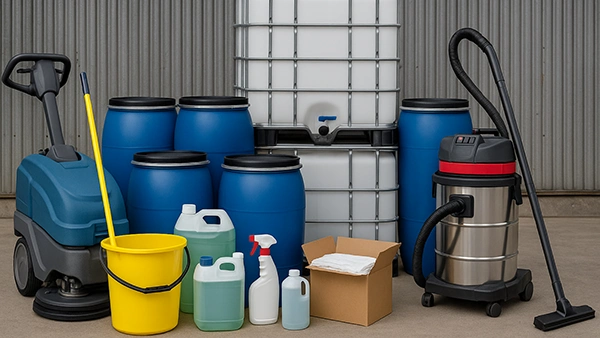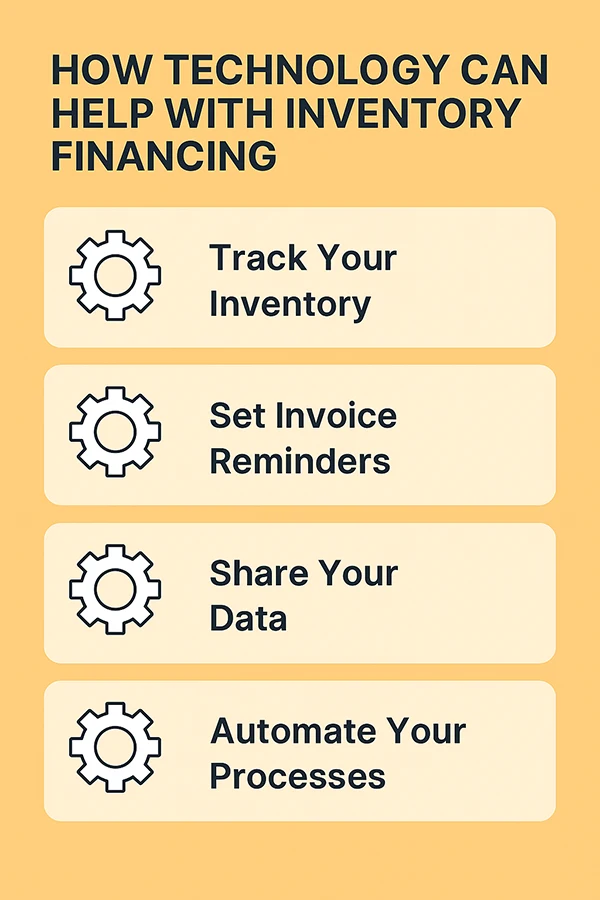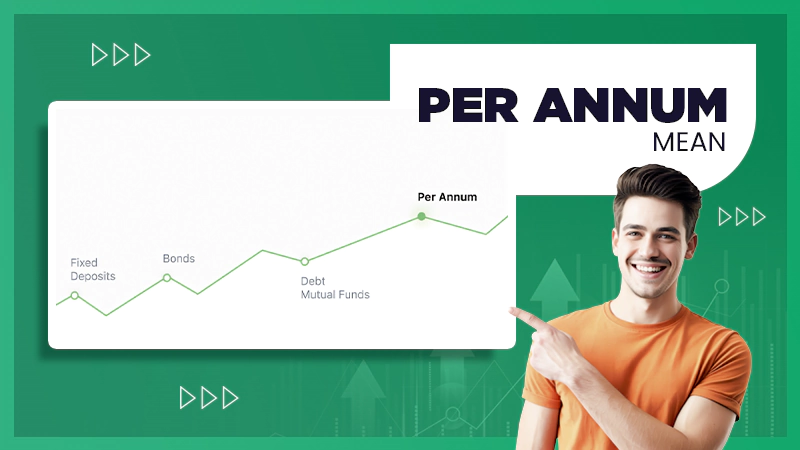Keeping an inventory is not an easy task, as a lot of things need to be taken care of. This includes choosing the right storage location, using labeled and clear containers, keeping the storage area tidy/in check, and more.
KEY TAKEAWAYS
- Holding cost increases as you stock up on safety gear or specialized solvents.
- The cost of disinfectants typically rises during flu season, and deep-cleaning products increase before the holiday season.
- Disinfectants, cleaners, and other chemical-based supplies have a limited life and can’t be stored for a longer period.
- Maintain a good relationship with the supplier to get discounts and better offers.

Doesn’t matter if you have a restaurant business or an industrial cleaning is a must for everyone. Not to mention, the global cleaning market is estimated to be worth over $329.2 billion in 2025. These numbers are proof of how seriously cleaning is taken by people and organizations.
But they are not cheap, especially if you are running a large operation that requires deep cleaning now and then. All the chemicals, equipment, and tools can be quite expensive. That’s why it’s important to make smart decisions.
So, in this article, I’ll give you inventory financing tips for industrial cleaning supplies. You’ll have an idea of how and when to purchase things and save money. Let’s get started.
Understanding the Unique Inventory Burden
Now, first things first, you have to understand the unique inventory burden. This includes:
High-Value & Bulk Items
The upfront cost of floor scrubbers, vacuums, pressure washers, and other industrial equipment is very significant. Detergents, disinfectants, degreasers, and other acidic chemicals need to be ordered in large quantities.
Diverse & Specialized Cleaning Supplies
From safety gear to specialized solvents, you need to store a wide range of products. This increases your holding costs.
DID YOU KNOW?The inventory finance global market is said to reach $558.7 billion by 2033!
Seasonality & Demand Fluctuations
Demand for cleaning supplies sometimes dips and sometimes spikes. For example, demand for disinfectants inevitably rises during flu season; on the other hand, deep-cleaning products experience a price increase right before the holiday season.
Perishability
Disinfectants, cleaners, and other chemical-based supplies have very short shelf lives. Holding excess items risks spoilage or depreciation.
Why Inventory Financing is Essential
Effective inventory financing:
- Frees up capital for wage payments, rent, and other operational expenses
- Helps in purchasing in bulk and getting special rates
- Helps in adding new, in-demand products and equipment
- Helps in maintaining inventory ahead of predicted high-demand periods
- Ensures timely cash payments to suppliers
- Funds business development
Inventory Financing Options: Choosing the Right Tool
You have traditional bank loans, asset-based lending, net 30 for cleaning supplies, and several other debt alleviation options. Make sure you choose the right tool.
| Financing option | Pros | Cons | Best For |
| Traditional Bank Loans & Lines of Credit (LOCs) | Lower interest rates for a commercial company with strong financials and credit | Requires substantial collateralLengthy application processesStrict legal agreementsRequires strong personal credit | Established distributors with solid revenue statements and credit history |
| Asset-Based Lending (ABL) | Uses inventory and unpaid invoices as securityLarger credit lines than traditional loans or LOCs50–80% of your collateral’s valueWorks well for company owners with low credit scores | Higher interest rates and penalty chargesRequires detailed inventory management and regular auditsStrict appointment rules | Businesses facing rapid growthBusinesses with low credit scores |
| Inventory Financing | Focused solely on inventory as collateralCan be set up as a term loan or revolving creditIdeal for funding large, be after inventory purchases | Higher costsHighly rigorous reporting/auditingStringent eligibility requirements | Financing in particular high-value inventory transactions |
| SBA Loans (7(a) or 504 programs) | Government-backed loansLonger financial repayment periodsLower down paymentsPossible lower rates | Complex application processLengthy inspection times Requires strong credit and business financials Requires personal backing | Small to medium-sized factories meeting SBA criteria |
| Net 30 | Net 30 for cleaning gear is interest-free short-term funding (if paid on time)Extended terms like Net 45, Net 60, Net 90 Easy and minimal paperworkFacilitates receiving, hive away, and even selling inventory before corresponding with suppliers | Not all suppliers offer Net 30Late payments can lead to penalties and awkward supplier relationships | All businesses |
| Fintech & Alternative Online Lenders | Faster application and admitting procedure Less stringent credit requirements | Significantly higher fees and mortgage rates Shorter repayment terms | Businesses demand quick cash |
Pro Tips for Optimizing Your Inventory Financing Strategy
Master Inventory Management
Inventory management can be used for various things like real-time tracking, demand forecasting, and reporting so make sure to master it.
Strengthen Supplier Relationships
A strong relationship with the supplier helps you arrange better terms and get early specials.
Choose & Manage Your Financing Partner Wisely
Explore and compare different options when looking for Net 30 for cleaning supplies. Aim to build trust once you find the right partner for financing. Eligibility should always be maintained at all costs.
Leverage Technology
Use technology to track inventory, automate Net 30 invoice reminders, and share data with lenders. Below, you can see the other ways technology can help with inventory financing.

Regularly Review & Adjust
Regularly audit your inventory and reassess your financing specifications to choose the right option for bulk sterilization supplies for your firm. Make sure you track your key metrics like turnover ratio, DSI (Days Sales of Inventory), and DPO (Days Payable Outstanding).
Potential Pitfalls to Avoid
Any misstep can disrupt your cash flow management and reduce profitability.
- Avoid using loan funds to hide overstock or weak sales. Don’t add more debt if your products are not moving.
- Don’t underestimate the total cost of leasing, which includes fees, interest, and potential civil penalties if you are struggling to pay on time.
- Avoid financing inventory you can’t transport, such as slow-moving items.
- Do not miss notification deadlines or payment due times.
- The lender can take custody and liquidate your securities if you default on a loan.
You can improve your cash flow, reduce risk, and stay stocked to meet fluctuating demand with the right fundraising strategy and smart inventory controls.







